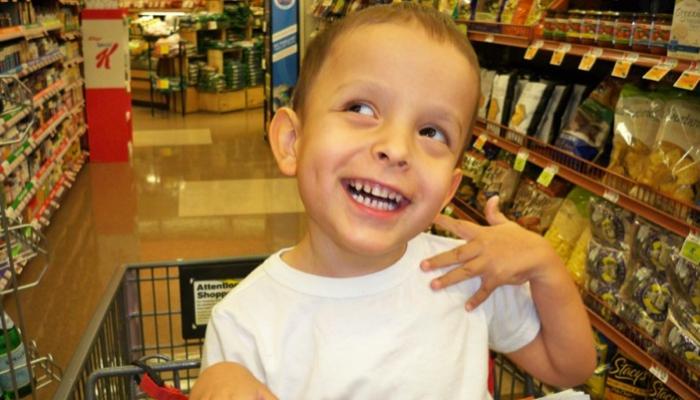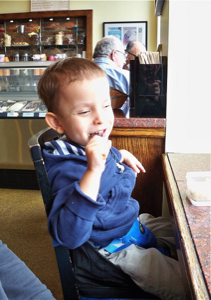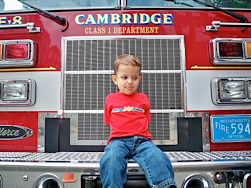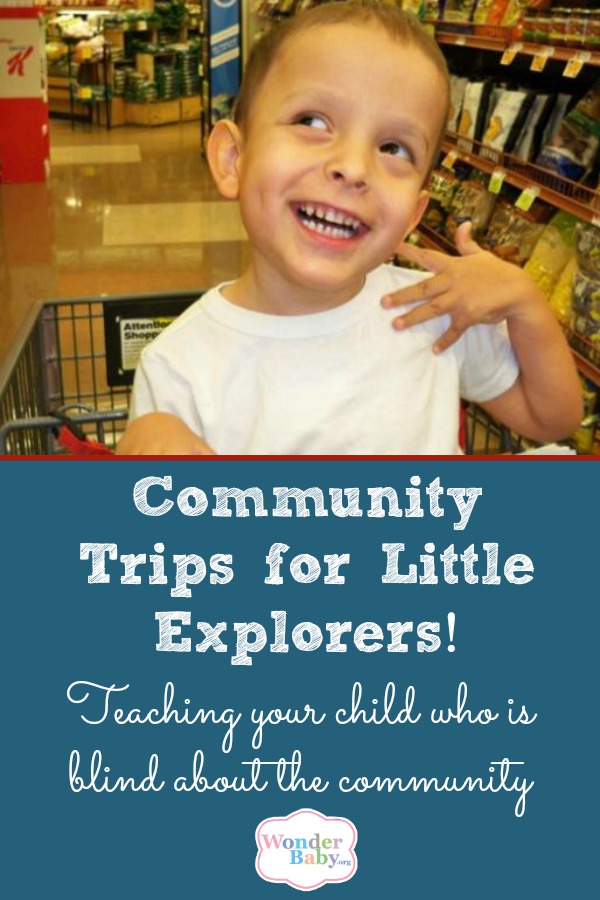Community Trips for Little Explorers: Teaching your child who is blind about the community

Children with visual impairment learn by having direct, hands-on experiences with objects and events, including those in their community. Children with typical vision can observe from a distance (for example, while seated in a shopping buggy) and learn a great range of concepts this way. Children who are blind or visually impaired, on the other hand, have to get “up close and personal” with these same objects and events in order to learn about them and understand what is happening. A full memory “bank” of tactile, auditory, and olfactory experiences (touch, hearing, and smell) at home and in the community, will build important concepts that will prepare your child for further language and social learning.
Many different community locations offer enjoyable learning opportunities. For the younger preschooler a brief trip to the supermarket, ending with purchasing and eating a favorite snack, may be the most fun and successful. An older child may enjoy a longer sequence such as signing and delivering a birthday card to a parent or grandparent at the local post office. Tailor the trip to the interests and attention level of your child. The following are suggested destinations:
- convenience store
- fast food restaurant
- supermarket
- bakery
- discount department store
- post office
- garden shop
- library
- pharmacy
- fire station
- gift shop
- police station
How to Make Your Trips Successful!
 Most often these special trips work best if done separately from longer, more complex weekly errands. If possible, plan these special trips with your child when you can take time to offer your total, undivided attention.
Most often these special trips work best if done separately from longer, more complex weekly errands. If possible, plan these special trips with your child when you can take time to offer your total, undivided attention.- Talk to your child ahead of time about where you are going and invite suggestions about types of items that might be found there. Offer help to think of one to four different items to find, depending on how many your child can remember. Most of these items should be things very interesting to your child. If this trip involves shopping or buying food, talk about how much money will be needed and provide a bill large enough to cover the cost. Suggest that your child carry it in a pocket.
- On the way to your destination occasionally discuss, again, where you are going and see if your child can recall what the two of you intend to buy or find. Ask your child to check to make sure the money is still in their pocket.
- Encourage your child to use current Sighted Guide skills while walking from the car, across the parking lot, through the building, and back to the car. Your child should hold one or two of your fingers firmly and walk beside you, preferably slightly behind. At curbs you should come to a complete stop while saying that you are coming to an “up curb” or “down curb.” Your child should stop beside you, and then wait for you to step first before stepping up or down. By this age most children are ready to walk at all times; carrying should be limited to special circumstances. Use Sighted Guide for most travel within the building, except for free exploration of small areas.
- Allow your child to stop occasionally to explore a particular small area. Stay close by to offer any necessary protection and to describe what he is finding. Remind your child to “put your hands out in front” or “use you’re your bumpers” when necessary. Offer simple descriptions of what the objects are, how they feel, and how they smell. Point out noticeable sounds and help your child figure out what they are.
- After allowing exploration of some small areas, objects, and merchandise return to the task of locating the items decided upon earlier. Again ask what items are needed, and where the money is. Walk your child to the appropriate aisle using Sighted Guide, to a position close to the merchandise you’re looking for. Help your child decide which container is correct and place it in the buggy or the hand basket.
- At the front of the store encourage your child to stop, listen for a cash register, and point to the sound. Help your child find the counter, place the items on top, and get out the money. You may need to encourage the clerk by saying out loud, “the nice lady is going to tell you how much it costs.” When the clerk does this, this is your child’s cue to hand over the money (bills only). You may need to demonstrate supination (turning palm up) of your child’s hand to receive the change. A big thank you to the clerk is great! And, carrying the bag out of the store gives your child a feeling of completion and accomplishment. If a special treat was purchased allow your child to have some of it within a few minutes of the purchase, if possible.
- Use this approach with other simple community trips. Offer many objects and areas to explore; everything is important for your child even if it seems insignificant to you. You have seen the item or landmark many, many times, but your child may never have had direct contact with it. Encourage tasks such as putting a stamp on a letter and dropping it in the mailbox, throwing away the table trash from lunch at McD’s, or pulling off a plastic bag to put the apples in. There is a small part of almost any event that your child can help with and learn from. With a bit of repetition, most children learn to enjoy these adventures in independence.
 Offer your child many experiences, and continue those that seem highly motivating. Never push participation in an activity that your child is resisting, merely try again later. Most children quickly learn to enjoy and seek out even more of this type of environmental exploration and learning.
Offer your child many experiences, and continue those that seem highly motivating. Never push participation in an activity that your child is resisting, merely try again later. Most children quickly learn to enjoy and seek out even more of this type of environmental exploration and learning.- Precane or Cane? Community trips are sometimes helpful for introducing the use of a precane or cane. However, the purpose of these trips is largely for the hands-on exploration of the setting, so care should be taken not to allow the use of the device to interfere. You may want to hold off on use of the precane or cane until these trips are well established. Your child’s VI teacher and O&M Specialist should discuss when your child is ready for work on a device and how this can best be accomplished. If the team agrees on community trips with the device, thought should be given to how to work this in. A predictable routine in the store, for instance, may be helpful. For example, this might involve a period of exploration, followed by shopping for the three items, and then using the precane or cane to walk to the front of the store for the purchase.
- Consult regularly with your child’s O&M specialist to update and expand on these trips.
Read this article in Arabic: حيوا-السيدة-العمياء

Related Posts

Eye Conditions and Syndromes, Visual Impairment
Neuralink Announces Plans to Restore Sight to the Blind with Brain Chip
Elon Musk’s company Neuralink has announced plans to begin human trials of its new “Blindsight” brain chip by the end of 2025.

Visual Impairment
The Gift of Understanding: How a Young Child Helps His Blind Father Navigate Life
When a parent is blind, it’s natural for people to wonder how their sighted child will adapt. Will they struggle to understand their parent’s needs? Will they feel burdened by...

Braille and Literacy, Toys, Visual Impairment
24 Braille Toys for Kids Who are Blind
Everything from alphabet blocks to raised line coloring pages and activity books to puzzles to card and board games... and so much more! And it's all in braille ready for...